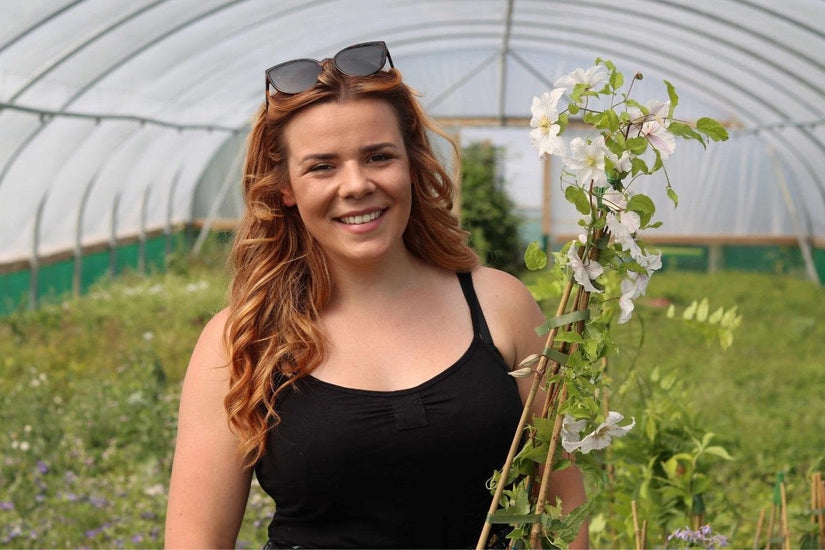Honeysuckle Plants
Honeysuckle plants are vigorous climbers with clusters of deliciously scented flowers to attract the bees and butterflies in summer, followed by berries for the birds in autumn. Available in a variety of colours, they’re a must for any garden arch, pergola or fence. Choose from creamy white, sunshine yellow or even scarlet - the lush green foliage comes as standard.
Need help picking?Sort and filter
Cheltenham
Meet Mollie
Climbers grown by specialists at the height of their game
What does it take to grow the strongest and best climbing plants in the show tent? Organic fertilisers, natural pest control and years of dedication from Mollie, our expert grower in Worcestershire. Professionally pruned and checked by hand, they’re guaranteed to put on a gold standard display in your garden, too.
Need help picking?
Honeysuckle FAQs
What is the best place for planting honeysuckle?
Honeysuckle will be equally happy growing in a sunny spot or a position with a bit of light shade - ideally they like their roots in shade and their stems in the sun. Our grower recommends planting it near your seating area so you can fully appreciate the heady scent and cool shade of the foliage in summer. The scent grows stronger in a warm position.
When is the best time to plant honeysuckle?
The best time for planting your honeysuckle is in spring or autumn. Planting at these times means that the plant will have time to establish and develop its root system before the onset of cold weather. It’s also fine to plant in summer, although you may not see flowers until the following year.
What’s the best soil for honeysuckle?
Honeysuckle needs soil that is loose and well-draining. To boost growth, dig plenty of compost or well rotted manure into the soil before planting.
How much water does honeysuckle need?
Honeysuckle plants are drought tolerant once they’re established (after a year or so) but will need regular watering when newly planted and then during hot and dry spells. The soil should be kept moist but never waterlogged.
How often should I feed honeysuckle?
Feeding your honeysuckle will encourage fresh growth and more flower development. Do this once a year in early spring using a general purpose, slow release fertiliser, but avoid nitrogen rich fertilisers, as they tend to promote foliage growth at the expense of flowers.
How do I prune honeysuckle?
Established honeysuckle needs to be pruned to keep it in shape and control its size. After the flowers have finished, trim away any dead, damaged or overcrowded stems, but avoid heavy pruning, as honeysuckle blooms on old wood.
Does honeysuckle need support to grow?
Honeysuckle plants need support to climb up, such as a trellis, fence, or other structure. They will twine around their support as they grow, but you will probably need to train them by tying in the new growth with plant ties.
How fast does honeysuckle grow?
Most honeysuckle varieties are quick to grow, which makes them ideal for covering a wall or fence. Each variety is different, but you can expect an average of between 90 and 180cm of growth in a year.
Can honeysuckle be grown in containers?
Any honeysuckle plant can be grown in a pot, although more compact varieties will do best. Make sure you choose the largest pot available (at least 45cm wide and deep) and provide support wither in the pot or by placing it next to a wall, trellis or fence.








